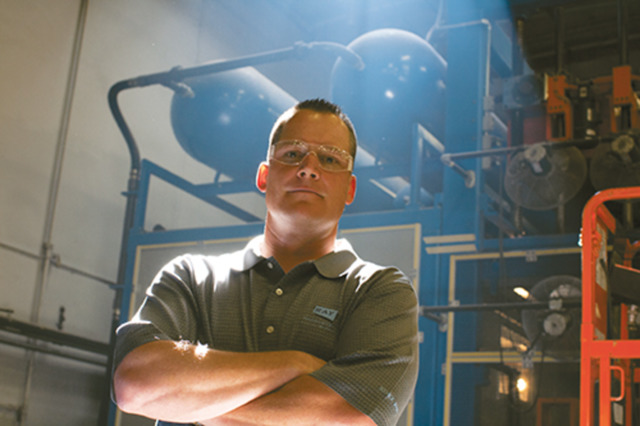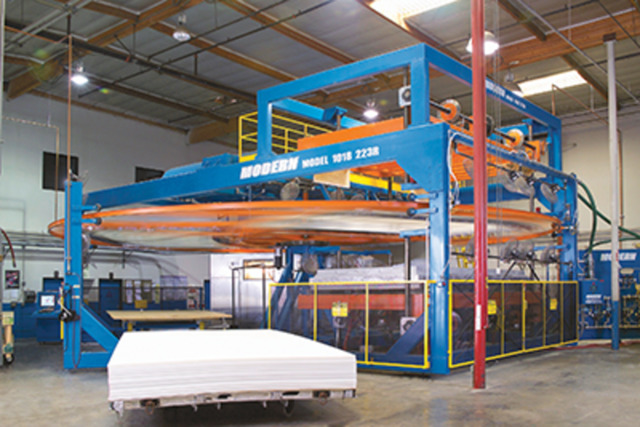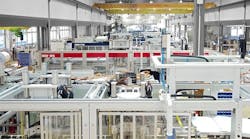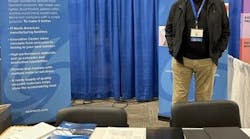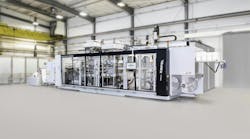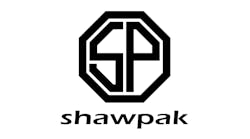For Brian Ray, president of Ray Products Co. Inc., bolstering the company's capability to thermoform large parts is a way of honoring the legacy of a company built by his grandfather and father. Indeed, the family business has grown substantially from its beginnings in 1949 as a 1,000-square-foot custom fabrication shop in Alhambra, Calif., to its present 48,000-square-foot facility in Ontario, Calif.
Since becoming president in 2003, Ray has made substantial investments in the company. Beginning in 2005, the company made equipment purchases with a renewed focus on technology. It has increased its manufacturing capabilities almost every year since, with additions that include fully robotic trimming and forming capabilities up to 10 feet by 18 feet.
Ray said he still meets people who did business with his grandfather and his father, who passed away in 2004. While neither got to see the latest capabilities, "I hope that I have added to their legacy by doing those things," he said. He recently spoke to Plastic Machinery Magazine senior correspondent John DeGaspari.
Tell us about your background. What led to your decision to join the family business?
Ray: I grew up in Southern California. I went to college at the University of San Francisco. I have an international business degree with an emphasis in marketing. After I graduated, I worked a couple of [Internet, marketing and advertising] jobs in the Bay Area.
I really wanted to do something a little different. Maybe the software side wasn't for me, wasn't tangible enough, to where I wanted to get out and be part of something where a product was made. One afternoon, I called my father. He said, "We have an opening in sales, and if you are interested, if you want to come down and interview over the holidays, go ahead and do that." I went through kind of a rigorous interview process with the sales manager. An offer was extended, and I took the offer and started in sales May 1997.
How has your thermoforming business changed over the years from a machinery perspective?
Ray: When I started, we bought equipment, but mostly it had been used equipment. So it wasn't the latest and greatest, but it was a generation or two behind. A lot of the stuff we did used hand fixturing, hand trimming. We did have two or three CNC machines from the woodworking industry. Over time, we started to add sales and add customers who had different needs. If we were going to grow the business and grow the sales, we had to grow the capability and the technology.
What were the important ways that the company has increased its capabilities and its services?
Ray: We made a commitment to six-axis robotic trimming centers [supplied by Dynamic Robotic Solutions] years ago. We had been using gantry-based CNC routers. We had a lot of parts that we would trim sidewalls, cutouts or deep areas of a part that you couldn't get to. So you would have stops in your program, where you have to flip the part into a second fixture. One of the things that robots brought was, the robot arm is five-axis and the table [that holds the part] rotates 360 degrees. By the table rotating, you can put things in the program to rotate the part to get to areas that maybe you couldn't get to in the past. We took programs from the CNC-based machines and moved them over to robots. They were 25 percent faster just because we were able to not have to stop the program or not have to change part fixtures.
Our idea there was just to move new business on to that new robot. Within three or four days, we decided that that was not in our best interest. What was in our best interest was to move as much business from the other trimming machines to the robot, to pick up the efficiency and the accuracy and the repeatability that we were seeing.
Were there any bumps along the way?
Ray: One thing that we didn't predict is that our fixturing had to improve. We had to hold the part better, because we were going to trim it maybe quicker or trim it in a different sequence. We found ourselves in a bottleneck pretty quickly in the tooling and fixturing department, to get those fixtures remade and to have new fixtures ready to get on the robot. Once we got over that hurdle, we started asking what we needed to do to get more work processed through.
That's really when the business started to change. The comfort level with the programming employees here, being able to set jobs up and go through trimming the first part, getting it through quality to get approved, getting it back and able to run production, was fantastic. The robots have a much better controller package. What we realized is that if you are going to start trimming a part with more accuracy and more speed, it forces your hand to make sure you mold a better part. That made us look at our forming capability and our tooling capability. Both had to be elevated as well.
Elevated in what way?
Ray: Oven profiles or oven controls are really important on how you process some of these new materials. If everyone is used to running styrene or ABS, which are great materials that have a very big forming window, you can probably get away with a little less temperature control on your tool surface.
But if you start forming materials like polycarbonate or polycarbonate/ABS, or start doing things with TPO or polyethylene, you are going to need better heating control on the machine and better temperature control on your molds, and then bring them together at the right time. You start getting rid of the whole idea of the visual and the manual in the process and you start to automate it. You start molding a better, more consistent part right away. If the first part is a good part, you have started to reduce the overall changeover time.
We upgraded some of the equipment that we had, but that was the short-term plan. The long-term plan was to start looking at new equipment. We started talking seriously with Modern Machinery out of Beaverton, Mich. We liked what they offered; we liked the robustness of their machines, liked their software package, their touch screens; we liked some of the things they were doing; we liked their clamp frame systems. We made a commitment to start with Modern. All of those machines are the same as the robots, in a sense that they are interchangeable and allowed us to move programs around from machine to machine.
Heating is something we're very aware of, and you have a few options. A lot of people used gas for heating where electricity is very expensive; but we have found that gas doesn't give you the control that you need to run some of the materials that we want to run, nor does it give the same processing times. The company uses infrared electric quartz face heaters [supplied by Solar Products Inc.] on its thermoforming machines.
What are you hearing from your customers in terms of materials?
Ray: I feel comfortable with any thermoplastic that is out there. In my time here, it has been ABS, styrenes, and polycarbonates. We run a lot of fire-retardant materials, because medical is a big part of our business. There is a lot more use of PC/ABS; people want the impact and the fire retardance that you can get out of that material. We run a fair amount of TPO. There is always the composite conversation. What is intriguing there is what can you do to reduce weight and increase strength.
What do your customers say about recyclability? Is that a big issue?
Ray: It is. People want to know about downstream recycling. We started seeing this seven or eight years ago, and this became a hot-button issue. What are we going to do with these parts end-of-life? There are opportunities. If you are molding in color, and if you molded in some attachment points [where various parts can be joined together] and features, and that part can be recycled downstream, that is the Holy Grail. We do see that question coming up a lot more often.
What impact do you think 3-D printing will have on the thermoforming process?
Ray: It's exciting. One, it can help us and our customers prove things out if there are design questions. For instance, if we are going to do something that has not been done before. Let's say we are going to mold a pretty extreme undercut, or we are going to mold a feature that the customer is really concerned about. We could take that section, have it 3-D printed, and everybody would feel comfortable with what's going to happen. Also, 3-D printing offers exciting opportunities for making fixtures or custom attachment points.
How would you like to be remembered, either personally or professionally?
Ray: Neither my grandfather nor my father got to see robots here, and they never got to see the forming capabilities that we are doing. I would hope that I have added to their legacy by doing those things; that's the most important thing. I would want to be known for being employee- and customer-focused. We are not anything without our employees. You can have the greatest robot in the world being delivered, but if you don't have the employees who want to embrace the technology, you will have a robot that is going to sit there and do nothing. And without the employees to do it, we don't have any way to show the customers how we can do it.
Just the facts:
WHO IS HE: Brian Ray, president of Ray Products Co. Inc.
HEADQUARTERS: Ontario, Calif.
COMPANY FOUNDED: 1949
EMPLOYEES: Less than 50
MANUFACTURING CAPABILITIES: Larger-part thermoforming; pressure forming, tooling; robotic trimming; painting, finishing and assembly.

